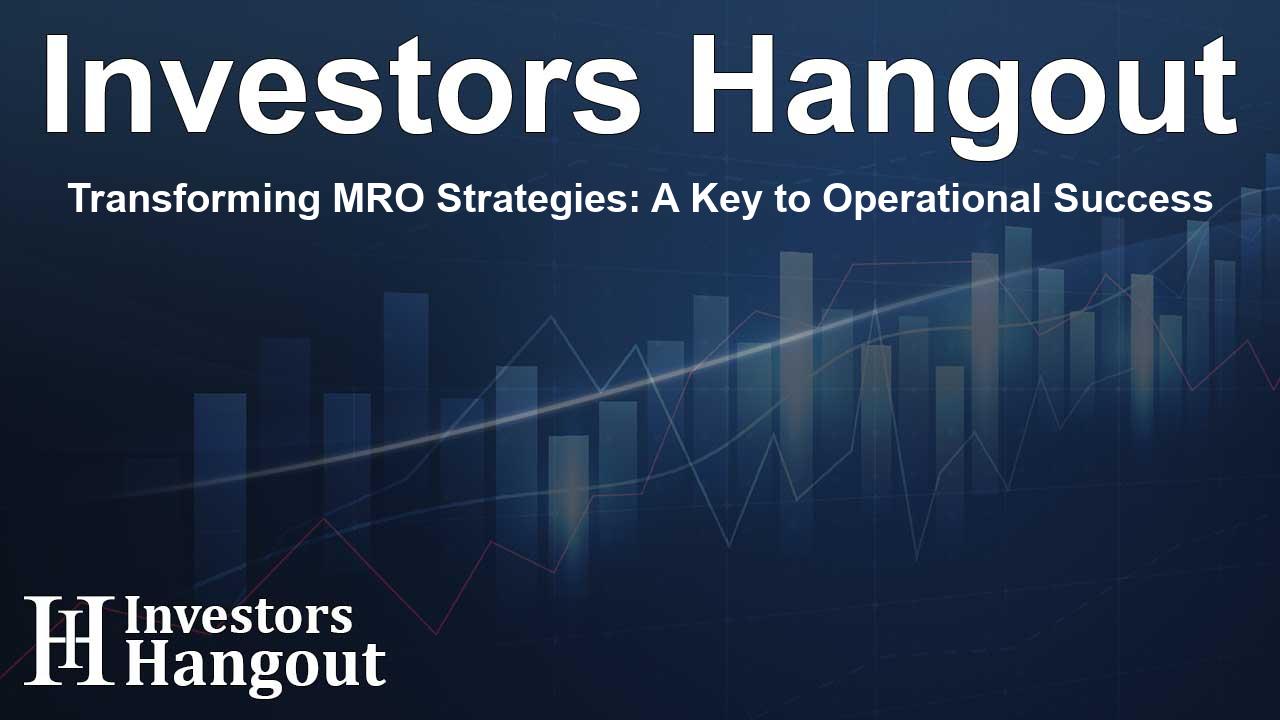Transforming MRO Strategies: A Key to Operational Success

Transforming MRO Strategies: A Key to Operational Success
Verusen, a pioneer in AI-driven maintenance, repair, and operations (MRO) optimization, has highlighted a notable trend among manufacturing leaders regarding the strategic value of MRO initiatives. According to a recent survey, a significant 71% of procurement and operations professionals believe that MRO should be regarded as a strategic initiative that fosters continuous improvement and innovation.
The Current Landscape of MRO Practices
Despite this strong sentiment, only 58% of the surveyed leaders confirm that their organizations indeed treat MRO procurement and operations as strategic priorities. This discrepancy suggests a gap between recognition and action, emphasizing the need for organizations to better align their MRO frameworks with overarching business objectives.
Balancing Risk and Capital
In capital-intensive industries such as oil and gas, heavy manufacturing, and energy services, the emphasis on optimizing MRO is more critical than ever. Companies in these sectors are increasingly searching for ways to balance MRO working capital with risk management strategies. The survey revealed that 46% of organizations fail to consider asset criticality—the importance of specific spare parts in maintaining operational continuity—in their materials planning processes.
The Path to Strategic Alignment
Chris Rand, Head of Research at WBR Insights, notes, "The findings underscore a vital need for organizations to synchronize their MRO activities with broader corporate goals to generate strategic value." Rand illustrates how advanced technology can convert MRO from merely a cost center into a vital source of innovation and competitive edge.
Shifting Perspectives on MRO Efficiency
Scott Matthews, CEO of Verusen, emphasizes the evolving perception of MRO within companies. He states, "Rather than viewing MRO as simply a necessary task, businesses now consider it a crucial deliverable." This shift motivates organizations to seek out innovative technologies, such as artificial intelligence, to refine their MRO capabilities.
Identifying Challenges and Leveraging Opportunities
While the positives of adopting innovative MRO practices are clear, the survey also points out several challenges that organizations face. Many respondents cited issues surrounding data inconsistencies and inaccuracies arising from varying systems. A lack of standardized data and incomplete information can severely hinder effective inventory management and optimization of procurement processes.
Future Opportunities in MRO
Recognizing the opportunities ahead, many industry leaders identified the need for advanced technology in enhancing MRO operations. However, the research indicated that most organizations continue to rely on generic ERP systems and supplier management tools that were not specifically designed for MRO. A proactive approach involving AI-driven data analytics is essential for organizations that want to gain a competitive advantage moving forward.
Building a Culture of Continuous Improvement
Attempting to enhance MRO practices purely through technological investment is insufficient. Companies must foster continuous improvement through ongoing education and developing a culture that prioritizes technological integration. Training staff in best practices and effective use of technology is vital for achieving successful MRO outcomes.
Looking Towards 2030
As executives recognize MRO as a strategic asset for improving operational effectiveness, the movement towards a more integrated approach is predicted to evolve significantly by 2030. One key strategy that will enhance decision-making is incorporating asset criticality within all relevant materials management processes.
Frequently Asked Questions
What is the purpose of the Verusen survey?
The survey aims to understand the current state of MRO practices and their strategic role in procurement and operations within manufacturing industries.
How many professionals were surveyed in the study?
A total of 250 procurement and operations leaders participated in the survey conducted by Verusen.
What challenges do organizations face in MRO operations?
Common challenges include data inconsistencies, lack of standardization, and integration of legacy systems with modern data management solutions.
What technologies are companies looking to adopt for MRO improvement?
Businesses are increasingly turning to advanced technologies, particularly AI-driven analytics, to enhance decision-making and operational effectiveness in MRO.
Why is it important to focus on asset criticality in MRO?
Incorporating asset criticality allows organizations to prioritize spare parts that are crucial for continuous operations, ultimately reducing risk and enhancing efficiency.
About Investors Hangout
Investors Hangout is a leading online stock forum for financial discussion and learning, offering a wide range of free tools and resources. It draws in traders of all levels, who exchange market knowledge, investigate trading tactics, and keep an eye on industry developments in real time. Featuring financial articles, stock message boards, quotes, charts, company profiles, and live news updates. Through cooperative learning and a wealth of informational resources, it helps users from novices creating their first portfolios to experts honing their techniques. Join Investors Hangout today: https://investorshangout.com/
Disclaimer: The content of this article is solely for general informational purposes only; it does not represent legal, financial, or investment advice. Investors Hangout does not offer financial advice; the author is not a licensed financial advisor. Consult a qualified advisor before making any financial or investment decisions based on this article. The author's interpretation of publicly available data shapes the opinions presented here; as a result, they should not be taken as advice to purchase, sell, or hold any securities mentioned or any other investments. The author does not guarantee the accuracy, completeness, or timeliness of any material, providing it "as is." Information and market conditions may change; past performance is not indicative of future outcomes. If any of the material offered here is inaccurate, please contact us for corrections.